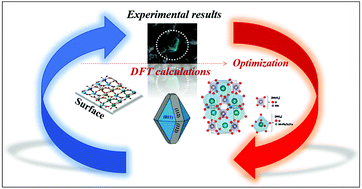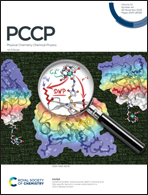Structure, electronic properties, morphology evolution, and photocatalytic activity in PbMoO4 and Pb1−2xCaxSrxMoO4 (x = 0.1, 0.2, 0.3, 0.4 and 0.5) solid solutions†
Abstract
In this work PbMoO4 and Pb1−2xCaxSrxMoO4 (x = 0.1, 0.2, 0.3, 0.4 and 0.5) solid solutions have been successfully prepared, for the first time, by a simple co-precipitation method and the as-synthesized samples were subjected to a water-based reflux treatment. Structural characterization of these samples was performed using X-ray diffraction with Rietveld refinement analysis and Raman spectroscopy. Their optical properties were investigated by UV-Vis absorption spectroscopy and PL emissions, and the photocatalytic activity of the as-synthesized samples for the degradation process of Rhodamine B has been demonstrated. The surface structure and morphologies were characterized by field emission scanning electron microscopy. To complement and rationalize the experimental results, the geometry, electronic structures, and morphologies of as-synthesized samples were characterized by first-principles quantum-mechanical calculations at the density functional theory level. By using Wulff construction, based on the values of the surface energies for the (001), (100), (110), (111), (011) and (112) surfaces, a complete map of the available morphologies for PbMoO4 was obtained and a good agreement between the experimental and theoretical predicted morphologies was found. The structural and electronic changes induced by the substitution of Pb by Ca and Sr allow us to find a relationship among morphology, the electron-transfer process at the exposed surfaces, optical properties, and photocatalytic activity. We believe that our results offer new insights regarding the local coordination of superficial Pb/Ca/Sr and Mo cations (i.e., clusters) on each exposed surface of the corresponding morphology, which dictate the photocatalytic activities of the as-synthesized samples, a field that has so far remained unexplored. The present study, which combines multiple experimental methods and first-principles calculations, provides a deep understanding of the local structures, bonding, morphologies, band gaps, and electronic and optical properties, and opens the door to exploit the electrical, optical and photocatalytic activity of this very promising family of materials.



 Please wait while we load your content...
Please wait while we load your content...